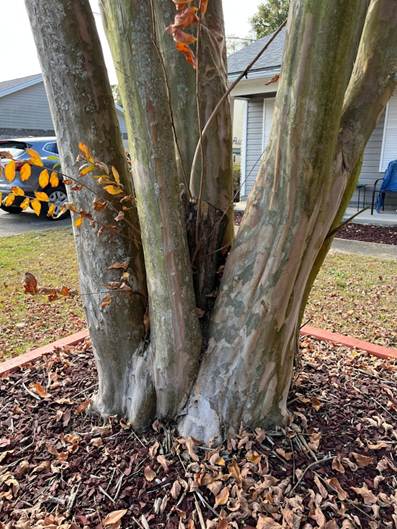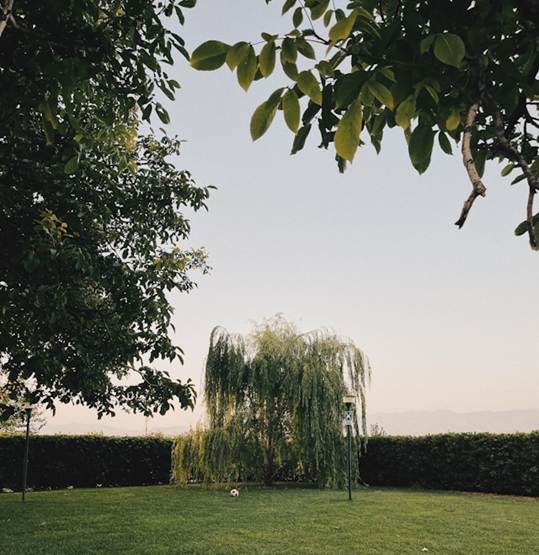
Mature trees are some of the most impressive and valuable elements in any outdoor space. They offer natural shade, visual appeal, and a sense of permanence that newer plantings simply can’t replicate. Yet, many homeowners aren’t quite sure how to integrate these towering features into their landscape without disrupting their health or missing the chance to make them stand out beautifully.
Thoughtful design that works with existing trees can not only enhance your yard’s visual flow but also support the tree’s well-being for years to come. In contrast, failing to properly plan around older trees may lead to damage or even the need for tree removal if health or safety becomes compromised.
This article shares creative, practical ways to incorporate mature trees into your landscape design - showing how to highlight their strengths while maintaining balance, structure, and style throughout your outdoor space.
Before diving into design ideas, it’s important to appreciate the unique advantages mature trees bring:
Shade and Cooling: Large canopies provide natural shade, reducing the need for artificial cooling and making outdoor spaces more comfortable.
Wildlife Habitat: Trees attract birds, butterflies, and beneficial insects, enhancing biodiversity.
Visual Interest: Their textures, shapes, and colors add depth and character to any garden.
Property Value: Mature trees can increase curb appeal and overall property value significantly.
Environmental Benefits: Trees improve air quality, reduce erosion, and mitigate noise pollution.
Given these benefits, preserving and creatively incorporating mature trees is a smart investment for both beauty and sustainability.
Before adding new elements, evaluate the health and structure of your existing trees. This assessment will guide your design choices and prevent damage.
Check Root Zones: Avoid heavy foot traffic, construction, or planting deep-rooted species near the tree’s drip line (the outer edge of the canopy) to protect roots.
Evaluate Canopy Shape: Note the canopy size, density, and height to understand the amount of light and shade the tree creates.
Inspect Tree Health: Identify any dead branches or signs of disease, and consider professional care if needed.
Consider Tree Species: Knowing your tree species helps in selecting compatible plants and materials.
Transform the space beneath a mature tree into a cozy retreat by adding seating that blends seamlessly with the natural environment.
Circular Benches: Install a curved bench around the tree trunk to encourage social gatherings and relaxation in the shade.
Rustic Furniture: Use natural wood or stone seating to complement the organic feel.
Hammocks or Swings: Suspend a hammock or swing from sturdy branches for a playful, serene spot.
This approach invites you to enjoy the tree up close while protecting the root zone by keeping foot traffic controlled.
Enhance the tree’s beauty with complementary understory plantings that thrive in shade or dappled sunlight.
Shade-Loving Perennials: Hostas, ferns, astilbes, and bleeding hearts add lush foliage and seasonal color.
Groundcovers: Use plants like ajuga, creeping thyme, or sweet woodruff to cover bare soil and prevent erosion.
Seasonal Bulbs: Add spring bulbs such as snowdrops or daffodils for early blooms under the canopy.
This layered planting mimics natural forest settings, creating a rich tapestry of textures and colors that highlight the tree.
Design winding paths that lead visitors toward or around your mature trees, emphasizing their importance.
Natural Materials: Use gravel, flagstone, or mulch to create organic-looking walkways that blend with the surroundings.
Lighting: Install soft, ground-level lighting along paths to illuminate the tree’s structure at night and enhance nighttime usability.
Curved Designs: Avoid straight lines; gentle curves around tree roots maintain health and add visual flow.
Pathways create inviting experiences while protecting roots by directing foot traffic.

Establish a clean, mulched bed around the base of the tree to define its space and improve health.
Use Organic Mulch: Wood chips or shredded bark retain moisture and suppress weeds without damaging roots.
Edge with Stone or Metal: Define the bed with subtle borders that keep mulch contained and add a polished look.
Avoid Planting Too Close: Leave a gap near the trunk to prevent rot and pest issues.
A well-maintained mulch bed signals intentional care and draws attention to the tree’s majestic form.
Water features near mature trees create soothing soundscapes and enhance the overall atmosphere.
Reflecting Pools: Small, shallow pools mirror the canopy, amplifying the sense of space and tranquility.
Fountains or Bubblers: The gentle trickle of water can attract birds and mask ambient noise.
Ponds with Natural Edges: Create habitats for frogs and dragonflies, further connecting your yard to nature.
Ensure water features are placed to avoid excessive moisture near roots, which can cause damage.
Strategic lighting can transform your mature trees into nighttime focal points.
Uplighting: Place spotlights at the base to highlight bark texture and branch patterns.
Silhouetting: Position lights behind the tree to create dramatic shadows on walls or fences.
String Lights: Wrap delicate fairy lights around branches for a magical, festive ambiance.
Lighting extends your outdoor enjoyment after sunset and enhances safety.
In larger landscapes, mature trees can help define distinct zones or provide privacy without fences.
Create Outdoor Rooms: Use trees to separate dining, play, or relaxation areas naturally.
Visual Barriers: Dense canopies and foliage block views from neighbors or busy streets.
Windbreaks: Trees act as natural shields against wind, protecting delicate plants or seating zones.
This approach adds structure and intimacy to your yard.
Art installations, sculptures, or garden ornaments placed near mature trees can elevate their presence.
Complementary Materials: Choose pieces made of stone, metal, or wood that harmonize with the natural environment.
Scale Considerations: Use appropriately sized art that neither overwhelms nor gets lost next to large trees.
Interactive Elements: Consider birdbaths or feeders that invite wildlife to your yard.
Art draws attention and adds personality while celebrating the natural beauty of trees.
While integrating mature trees into your landscape, it’s essential to prioritize their health:
Limit Soil Compaction: Avoid heavy machinery or concentrated foot traffic near roots.
Water Appropriately: Trees need consistent watering, especially during drought or planting changes.
Mulch Wisely: Maintain mulch layers without piling mulch against the trunk.
Consult Professionals: For significant landscaping or construction projects near mature trees, seek arborist advice to avoid unintended harm.
Healthy trees are more resilient and continue to enhance your landscape for decades.
Mature trees are priceless assets that enrich your outdoor space with beauty, shade, and environmental benefits. By thoughtfully designing your landscape around these natural giants, you not only preserve their health but also create a dynamic, welcoming environment that reflects your personal style and appreciation for nature.
Whether you choose to build seating areas beneath their branches, craft lush understory gardens, or light up their majestic forms at night, incorporating mature trees creatively turns your yard into a sanctuary that grows more enchanting with every season.